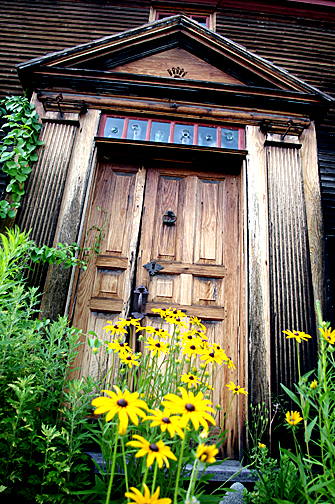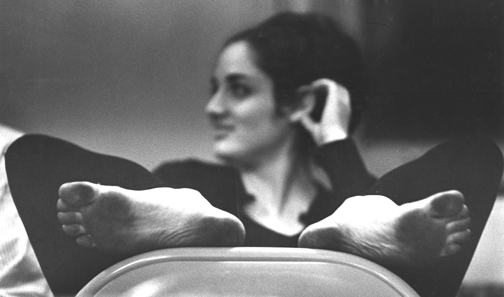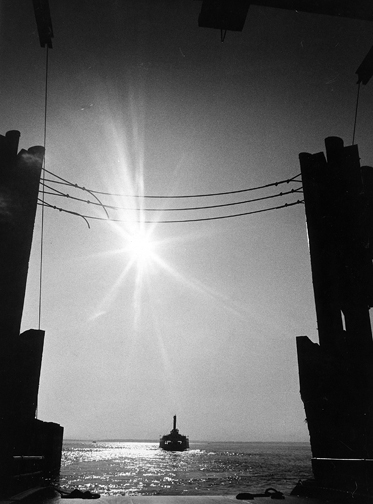What To Think About BEFORE You Shoot
By Arthur H. Bleich–

A low angle and some tilt makes this old doorway come alive. Photo © Arthur H. Bleich
Chances are you already know about different post production work flow techniques that can be used in Photoshop and/or Lightroom after you’ve shot your pictures. But it’s equally important to establish a workflow you can follow before you even make the shot.
Here are nine things you should think about before you lift the camera to your eye. I’ve grouped them so when you begin to follow this recipe you only have to be aware of three basic fundamentals. As they become part of your subconscious thinking you can then add the next three and then the final three, until all nine become part of your approach to every image.
THE BASIC THREE
Is this a good subject? A good subject will overcome even bad technique but a bad subject will always be a bad subject. Don’t waste your time and energy on bad subjects. Shoot a few pictures, if you must, and then move on.
What is the best point of view to use? This choice will make or break most pictures. If you are not sure at first, just shoot as many possibilities as you can. Shoot up from a low position, down from a high one, and so on. Use some camera tilt (both directions). After awhile, you’ll begin to intuitively know what to use.
What kind of lighting is best? Next to point of view, this is a most critical element. Many scenes look best when shot early or late in the day, when the light is warm and shadows give definition to objects. Portraits are best shot in the open shade, by window light or on overcast days. Does the subject looks best with the light hitting it straight on, from the side or from behind? If you need to, come back to shoot at a different time when the light is best.

A dancer takes a break during a rehearsal. Her bare, smudged feet are really what it’s all about. Photo © Arthur H. Bleich
THE INTERMEDIATE THREE
Am I in close enough? Photojournalist Robert Capa used to say: “If your pictures aren’t good enough, you aren’t close enough.” Move in, move in, move in. Shoot one and then move closer. Then shoot another, closer still.
Do I need to stop action or do I want a soft background? The answer to this will determine if you are going to use Shutter or Aperture priority. For stopping action, use the highest shutter speed setting within the range of proper exposure. Need a higher shutter speed? Up the ISO. For a soft background, use the maximum aperture or zoom the camera to a telephoto setting or lower the ISO or move in closer (or a combination of all four).

Dramatic lighting lifts this image of an old ferry boat out of the ordinary. Photo © Arthur H. Bleich
Should I shoot vertical images? Yes! Make sure you always shoot verticals as well as horizontals. And when you are shooting portraits (which are usually shot vertically) reverse your thinking and shoot some of them horizontally and framed in different ways to make them visually interesting. Don’t be afraid to put your subject in the middle of the frame or off to one side or even looking toward the edge of the frame. No rules here.
THE ADVANCED THREE
What is the essence of this subject? In other words, what is there about it that jumps out and says: “This is what I’m all about.” Shoot the obvious but then find the essence– that’s what you’ll want to home in on. A sculptor may be a good subject, but the essence may be in how his or her face is splattered with clay or their hands at work.
What lens focal length should I use? Wide angle settings space things out while telephoto settings squish them together. At wide settings you get more depth of field, larger maximum apertures to work with and less camera shake at slow shutter speeds. Telephoto settings narrow the depth of field, give you smaller maximum apertures and will magnify camera shake. Remember, a lens that says f/2.8-4.0 on the barrel means that with the zoom at full wide angle your maximum aperture is f/2.8 but at maximum telephoto, it shifts down a stop to f/4.
What can I do to make this shot extraordinary? An unusual angle, a prop, different lighting, putting something in the foreground, using a foreground object to frame the subject, radically changing the color balance, shooting a silhouette, having the subject (if human) do something unusual– all of these plus much more can make your picture stand out, and become uniquely yours.

Not all portraits have to be shot as verticals or centered. Space around the subject can be a very powerful element. Photo © Arthur H. Bleich
Now start by memorizing the “Basic Three.” Keep saying those to yourself until they’re burned into your brain. These are the questions that good photographers ask themselves before they shoot. Of course, as you get better, they’ll become part of your thought process and will go through your mind in a flash. After awhile, you won’t even be aware that you’re thinking about them– you’ll just size up the situation and start to shoot.
Print out two copies of these questions. Tack up a large copy where you can see it every day and also print all nine on a piece of paper the size of business card so you can jog your memory when you’re out shooting. Ask yourself at least the first three questions every time you see something interesting, even if you don’t have your camera with you.
Once these questions become part of your shooting routine you will become very, very good at photography in a very short period of time.
FEEL FREE TO COMMENT BELOW
Original Publication Date: September 09, 2015
Article Last updated: September 09, 2015
Related Posts and Information
Categories
About Photographers
Announcements
Back to Basics
Books and Videos
Cards and Calendars
Commentary
Contests
Displaying Images
Editing for Print
Events
Favorite Photo Locations
Featured Software
Free Stuff
Handy Hardware
How-To-Do-It
Imaging
Inks and Papers
Marketing Images
Monitors
Odds and Ends
Photo Gear and Services
Photo History
Photography
Printer Reviews
Printing
Printing Project Ideas
Red River Paper
Red River Paper Pro
RRP Products
Scanners and Scanning
Success on Paper
Techniques
Techniques
Tips and Tricks
Webinars
Words from the Web
Workshops and Exhibits
all
Archives
January, 2025
December, 2024
November, 2024
October, 2024
September, 2024
August, 2024
July, 2024
June, 2024
May, 2024
more archive dates
archive article list




